Do Snails Have Feelings?
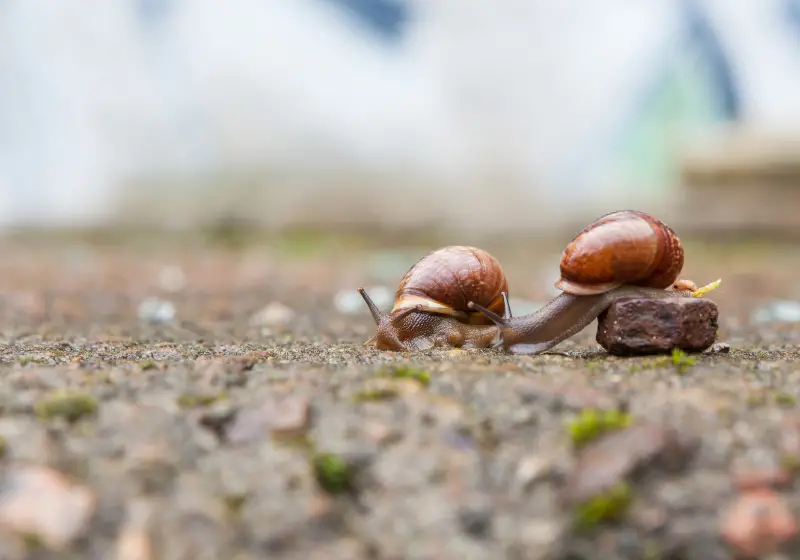
Snails are fascinating creatures that often spark curiosity about their capabilities and experiences. One question that might come to your mind is, do snails have feelings or emotions, just like humans and other animals? Understanding the differences in their nervous systems and how that correlates to their ability to process emotions is essential.

Research suggests that snails do not have feelings, primarily due to their simple nervous systems. Snails have much simpler structures than humans, who possess intricate neural networks in their brains. This simplicity means they can’t process basic emotions like pain or suffering. As a result, snails cannot experience emotions like humans do.
While exploring the emotional capabilities of various creatures is interesting, it’s essential to remember that snails are vastly different from humans. Acknowledging these differences can help you appreciate snails’ unique qualities and limitations while also deepening your understanding of the incredible diversity within the animal kingdom.
Contents
Table of Contents
Understanding Snails

Overview of Snails
Snails are a diverse group of invertebrates belonging to the phylum Mollusca, including other creatures like clams and squid. They come in various shapes and sizes, with over 60,000 distinct species. This section will teach you about the fascinating world of snails and their role in the animal kingdom.
You can find snails in many environments, from aquatic habitats to gardens. Garden snails, for instance, are common land-dwelling mollusks you might encounter in your backyard. As invertebrates, snails lack a backbone; instead, they have a protective shell that provides support and safety. This shell is usually spiral-shaped and can be vividly colored or patterned, adding to its unique appearance.
Snails in the Animal Kingdom
In the animal kingdom, snails belong to a larger group known as mollusks. Mollusks are one of the most diverse groups of invertebrates, encompassing over 85,000 known species, including snails, slugs, mussels, and oysters.
Snails are unique among mollusks because they possess a shell, their primary defense mechanism against predators. This shell is made of calcium carbonate and grows with the snail throughout its life. Not all snails have shells; some species, such as slugs, have evolved to live without one.
An essential feature of snails is their slow movement, attributed to their muscular foot. This organ secretes a slimy mucus that helps the snail glide smoothly over surfaces. Moreover, the mucus is a protective barrier, preventing moisture loss and keeping the snail hydrated.
As you explore the world of snails, you’ll discover their fascinating characteristics, diverse habitats, and unique adaptations, allowing them to thrive in the animal kingdom.
Snail Anatomy and Physiology

The Snail’s Nervous System
The nervous system of a snail is considerably different from that of vertebrates. Snails have a much simpler structure, as they have a rudimentary nervous system composed mainly of ganglia. These ganglia are the snail’s “brains” that control their bodies.
One of the key differences between snails and mammals is the absence of a well-developed brain in snails. Instead, they have clusters of nerve cells called nerve knots in significant parts of their bodies. These nerve knots are responsible for processing sensory information and controlling movements but don’t possess the intricacies required for processing emotions.
Neurology of Snails
In snail neurology, nerve cells or neurons are arranged in specific groupings or ganglia. These groupings include the cerebral, pedal, and other peripheral ganglia. The cerebral ganglia is the “command center,” coordinating sensory input and motor output. Meanwhile, the pedal ganglia are responsible for controlling the muscular movements of the snail’s foot.
Although snails have a basic network of neurons and ganglia, they lack the complexity to process emotions, as found in more advanced organisms like humans. As a result, it is unclear whether snails can experience feelings such as pain, happiness, or love. However, they can still react to their environment and perform essential functions, thanks to their simple and efficient nervous systems.
Snail Behavior
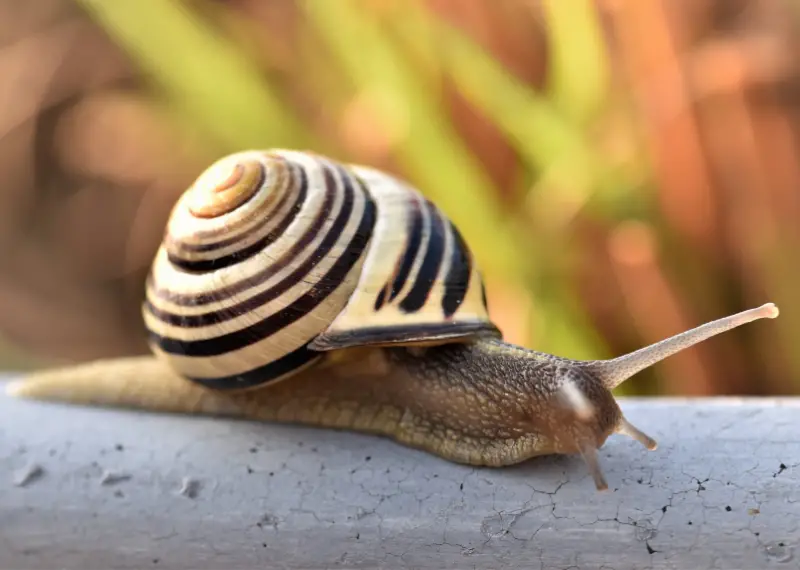
Mating Habits of Snails
Snails exhibit fascinating mating behaviors, which can vary among species. Typically, they are hermaphroditic, meaning each individual possesses both male and female reproductive organs. When snails mate, they exchange sperm to fertilize each other’s eggs.
One interesting aspect of some snail mating rituals is the use of a love dart. This calcareous structure gets shot by one snail into the other, aiding in successful reproduction by transferring hormones necessary for the process.
Snails generally prefer nocturnal or crepuscular mating behavior, which means they are most active during night or twilight. Depending on the species, the mating process can be slow, taking around half an hour to several hours. Following mating, a snail lays its eggs in a damp, protected area, ensuring a safe environment for offspring development.
Snail Feeding and Diet
Regarding feeding, snails exhibit diverse dietary habits depending on their habitat and species. As foragers, most snails are herbivorous, feeding on various plant materials, such as leaves, stems, and fruits. Some favorites include algae, which can be scraped off surfaces using the snail’s radula, a specialized tongue-like organ.
In aquatic environments, snails may consume fish food, leftover food scraps, or even dead fish. Some species, like the assassin snail, are carnivorous, hunting and feasting on other snails or small invertebrates. Snails have also been known to consume sand or soil, which assists in the digestion of plant material and provides necessary minerals for shell growth.
As nocturnal creatures, snails are most active in their foraging and feeding behaviors during the night or early morning hours. This allows them to avoid predators and unfavorable environmental conditions while they search for food.
In conclusion, the behavior of snails encompasses unique mating habits and diverse dietary preferences, but they do not possess complex emotions due to their simple nervous systems. Their primary focus remains on survival and adapting to their surroundings.
Snail Facts You Probably Didn’t Expect
Snails’ Interaction with the Environment
Snails and Their Habitat
You may have noticed snails, from your garden to a forest floor, in various environments. These little creatures are adaptable and can thrive in many habitats if the environmental conditions are suitable. Snails are usually found in areas with high humidity, like under rocks or tall grass. They prefer a damp environment, as it helps to maintain their moisture levels and prevents them from drying out.
Nocturnal snails are active at night, searching for food and avoiding predators such as birds, reptiles, and insects. During the day, snails hide under rocks, leaves, or other sheltered spots to avoid the sun and escape predators.
Snails’ Environmental Adaptation
In response to their environment, snails have developed various adaptations. For example, they can produce slime to help them move across different surfaces and retain body moisture. Their slime also allows them to stick to rocks, making it easier for them to move in their natural habitat and protecting them from potential predators such as birds and worms.
Another impressive adaptation of snails is their ability to learn. While their nervous system may be simple, they can still respond to their surroundings and gain knowledge about their environment to increase their chances of survival. For instance, they might learn where salt is present and avoid it, as it can harm their bodies.
Snails are quite resourceful when dealing with a threat. Snails can retract into their shells to protect their soft bodies in the presence of predators such as slugs, insects, or reptiles. This defense mechanism and their well-developed sense of touch help them navigate their environment safely.
In conclusion, snails have a fascinating relationship with their environment, showing their adaptability and resourcefulness. Understanding these creatures and their environmental interactions can help you appreciate snails’ unique behaviors and characteristics in their natural habitat.
The Emotional Life of Snails
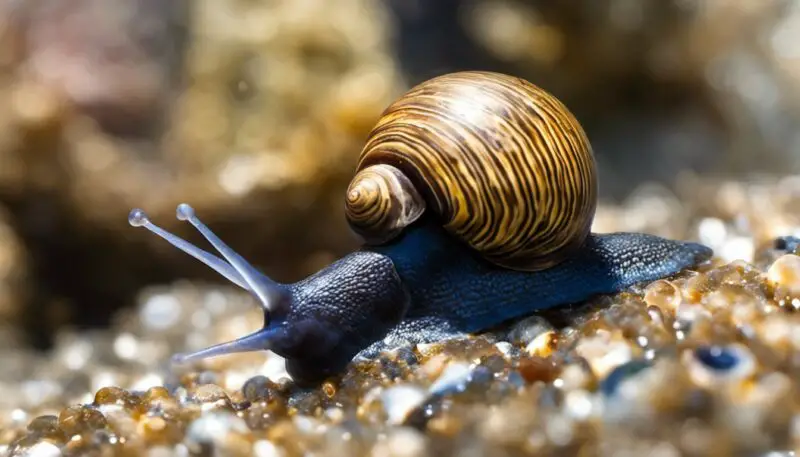
Do Snails Feel Pain?
Snails have a primitive nervous system and brain, which calls into question their ability to process emotions, particularly physical pain. Their simple nervous systems make it difficult to truly determine if they can experience sensations like pain or happiness.
As you explore the world of snails, it’s important to consider their limited capacity for emotional processing and treat them with respect as living beings.
Some studies suggest that snails may not feel physical pain as humans do, but this remains a debate among researchers. As you handle snails, be careful not to harm them and always act in their best interest to minimize potential suffering.
Interpreting Snails’ Emotional Responses
Interpreting the emotional responses of snails can be quite challenging, given their simple nervous systems. They primarily react to their environment based on instinct, making it difficult to ascribe specific emotions to their actions. A snail squirming or retreating into its shell is more about adaptation and survival than emotions like fear or love.
Although they might not share the same emotional capacities as other sentient beings, snails exhibit certain behaviors that could indicate preferences or reactions to stimuli. For example, some snails prefer cucumbers, but it’s unclear if this preference results from a sense of pleasure or simply an enhanced sense of smell.
In conclusion, while it’s challenging to determine if snails have emotions or feelings like humans, it’s important to remember their role as living creatures that react to their surroundings. Always handle them with care and empathy for their unique sensory experiences.
Snail Relationships: Do Snails Have Feelings
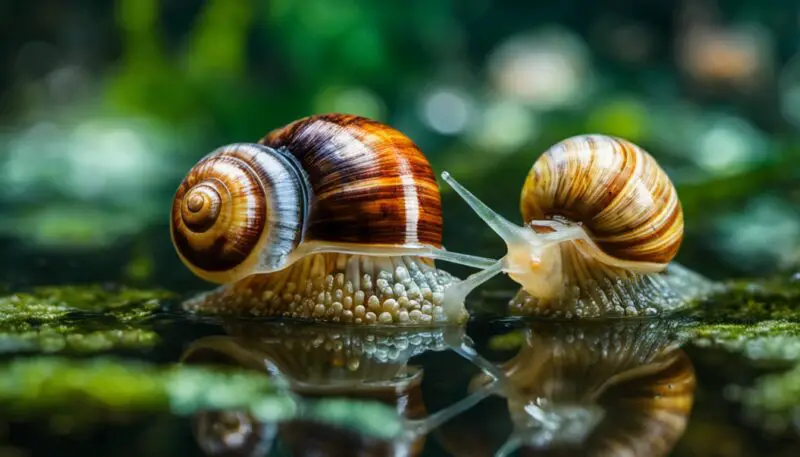
Snails and Their Owners
As a snail owner, you might be curious about the extent of their feelings and if they can form bonds with humans. Snails do not have feelings as we recognize them due to their simple nervous system and primitive brain. As a result, it’s unlikely that they experience affection, love, or trust towards their owners. Instead, snails’ behavior is mainly driven by survival instincts and reacting to their surroundings.
However, certain types of snails, like mystery snails, exhibit interesting reproductive behaviors that might seem like they involve emotions. Some snails use calcareous darts in a courtship dance before copulation.
Social Structure of Snails
In the wild, snails exhibit basic social structures. They are generally not considered sociable creatures, and their interactions with each other are primarily driven by mating and other reproductive behaviors. Their limited capacity for complex social behavior does not allow them to form bonds or display affection.
That being said, snails are not lonely creatures. They coexist peacefully, sharing the same habitat and resources without much competition or aggression. Snails can adjust their behavior based on their environment, but this is more about instinct and survival than emotional connection.
Your snail’s fascinating behavior and survival mechanisms can be intriguing. Still, it is essential to remember that they do not possess the same emotional and social capacities as humans. As a responsible snail owner, providing a comfortable and safe habitat for your snail to thrive is key.
Anthropomorphizing Snails

As you observe snails, it’s crucial to acknowledge that humans are prone to anthropomorphize animals, attributing human-like emotions to creatures with vastly different biology and cognitive processes. Snails are no exception to this tendency.
When snails react to their environment, they respond primarily to chemical signals. Simple scent cues help them navigate their world, locate food potential mates, and avoid predators. The brain functionality of snails is quite rudimentary compared to humans. This limited capacity results in a lack of emotional complexity, making them unlikely to experience feelings like people do.
Associative learning plays a significant role in how snails interact with their surroundings. They can form basic associations between stimuli and responses, but this process is far from what we understand as emotion. In fact, snails rely heavily on their sense of smell, responding to pheromones released by other snails when it comes to mating or identifying their prey.
So, it’s important not to confuse a snail’s basic instincts and adaptive mechanisms with human-like emotions. Rather than perceiving feelings in snails, you should focus on their instincts and various means of communication to better grasp their behavior. This way, you can observe these fascinating creatures more accurately and respect their unique biology and ecological roles.
FAQs: Do Snails Have Feelings

Can snails feel emotions?
Based on the simplicity of their nervous system, snails do not have the capacity to feel emotions like humans. Their ganglia, or “brains,” lack the structures responsible for emotional processing.
Do snails experience pain?
Although snails have a primitive nervous system, their ability to process pain is debated. If a snail were to fall off a wall, the event that would typically cause pain in a more complex nervous system might not affect them similarly.
Do snails have sensory perceptions?
Yes, snails possess sensory perceptions, albeit limited compared to humans. They have basic senses such as touch, sight, and smell, which they use to navigate their environment and locate food. However, their sensory perception is not as sophisticated as more advanced organisms.
Can snails recognize humans?
There is no solid evidence to suggest that snails can recognize individual humans. However, it is possible that they can recognize certain stimuli or cues based on their experience. For example, if they encounter a person bringing them food, they might associate that stimulus with a beneficial outcome.
Do snails feel fear or stress?
It is uncertain if snails can feel fear or stress as their nervous systems lack the complexity required to process such emotions. Although they may react to threats or potential harm, their responses are driven more by instinct and basic survival mechanisms rather than complex emotions.
Snails are not known to form social bonds in the same way humans or more advanced animals do. They may interact with one another, usually for mating purposes, but their limited nervous system and ability to process emotions make it unlikely that they form lasting attachments or bonds.

![What Do Apple Snails Eat? [Full Guide]](https://allourcreatures.com/wp-content/uploads/2021/10/what-do-apple-snails-eat-768x512.jpg)

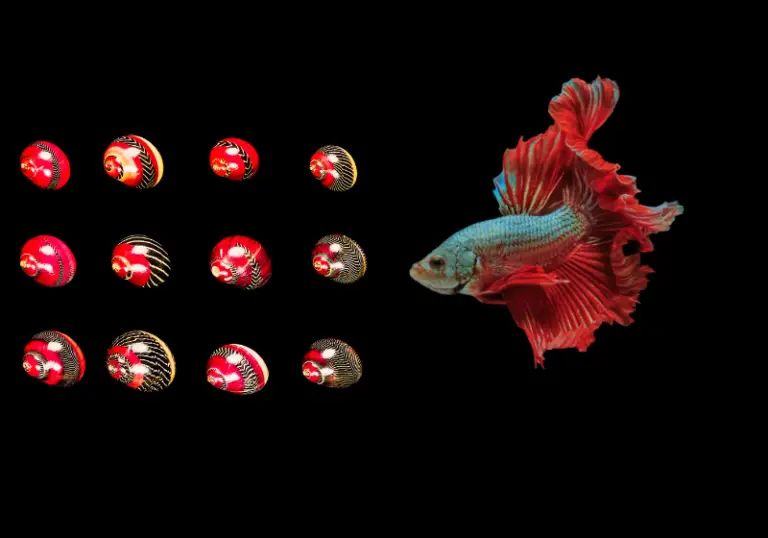

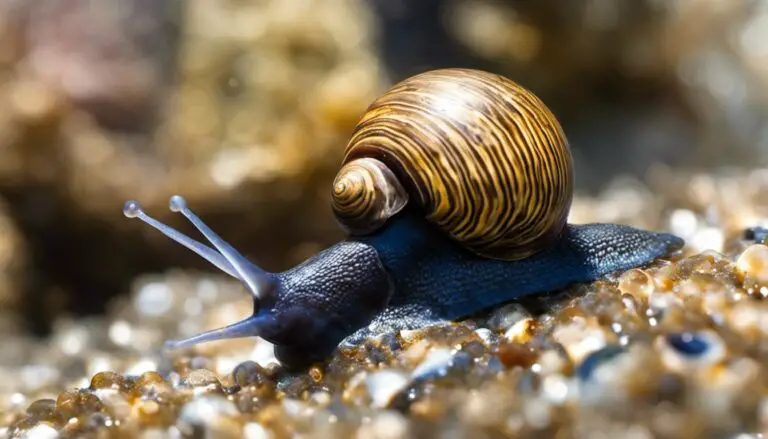
![Can Snails Swim? [Complete Answer]](https://allourcreatures.com/wp-content/uploads/2021/10/snails-swim-768x512.jpg)